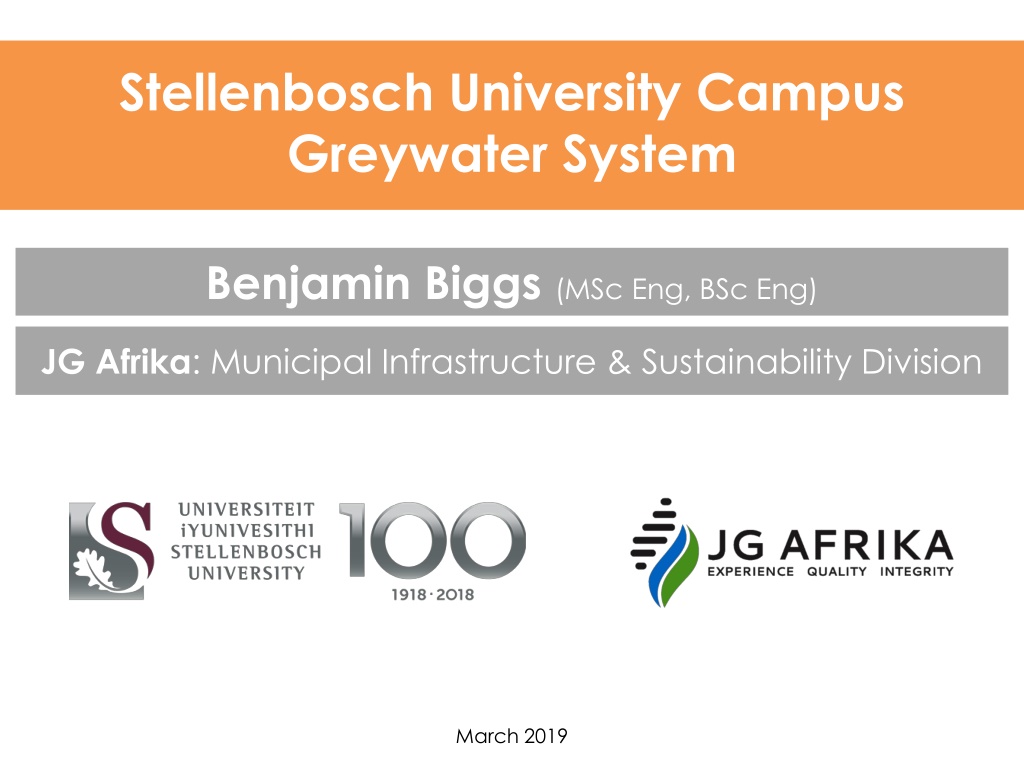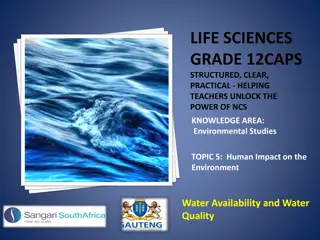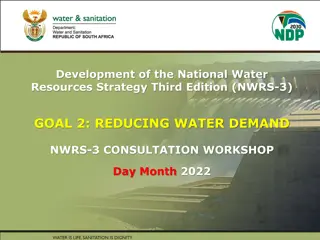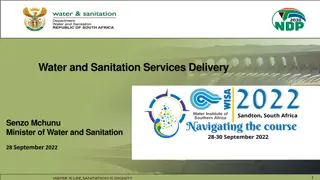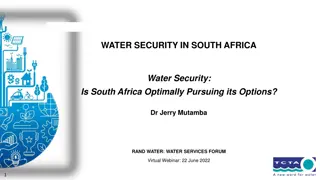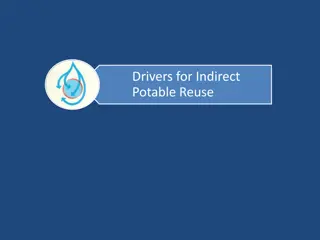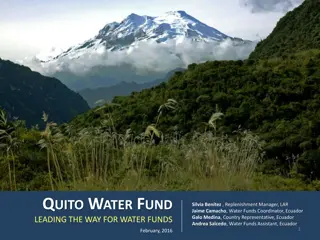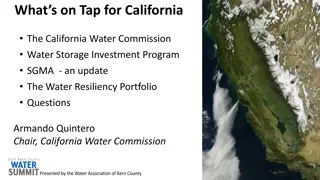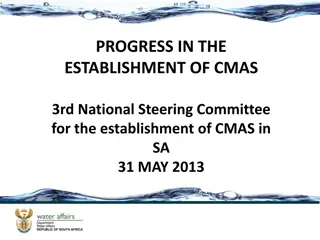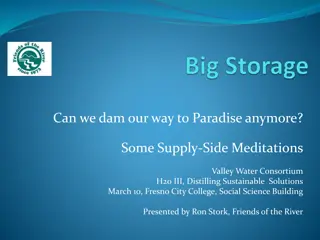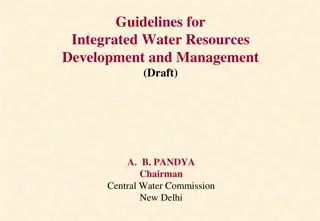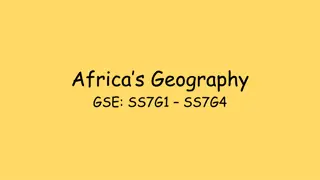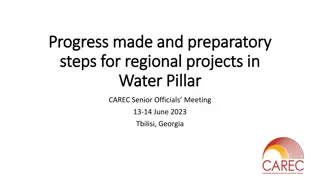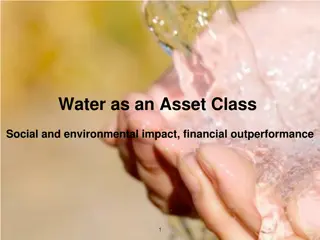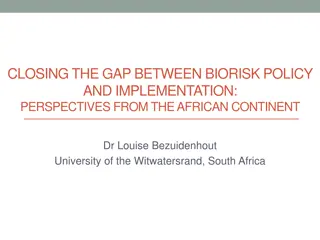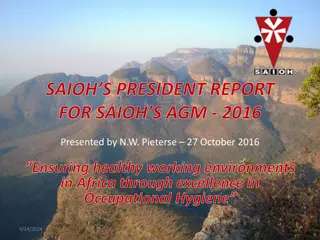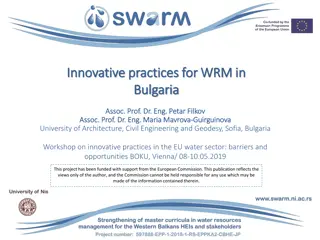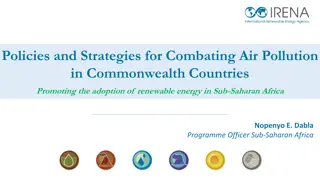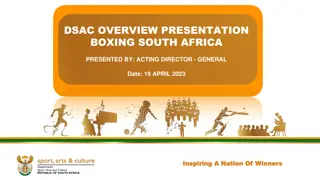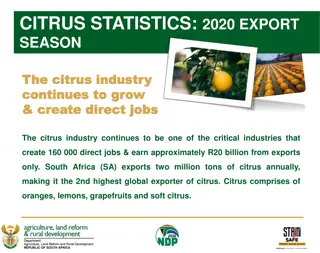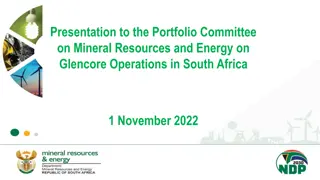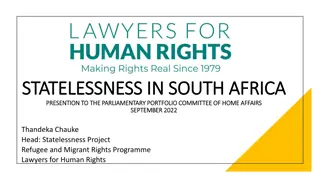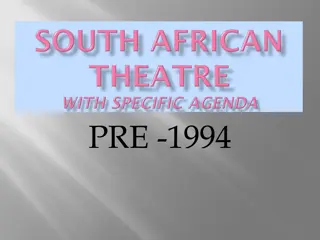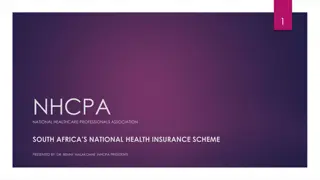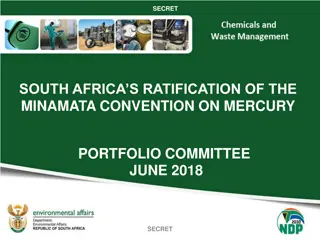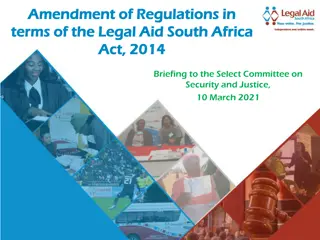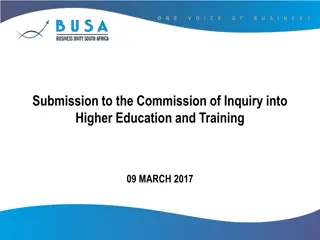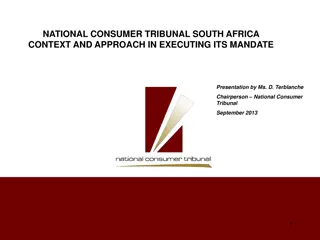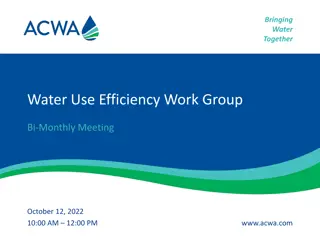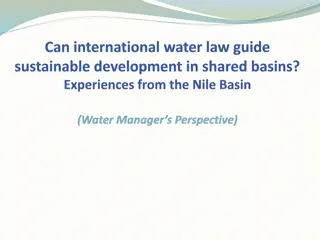Sustainable Water Management Strategies in South Africa
Overview of the Stellenbosch University Campus Greywater System designed by Benjamin Biggs. The project focuses on water-sensitive design, guiding principles, and the implementation phases for sustainable water management in the South African context, where water scarcity is a growing concern. Key findings highlight the importance of reducing potable water demand, developing long-term strategies, and integrating greywater systems for efficient water use.
Download Presentation

Please find below an Image/Link to download the presentation.
The content on the website is provided AS IS for your information and personal use only. It may not be sold, licensed, or shared on other websites without obtaining consent from the author. Download presentation by click this link. If you encounter any issues during the download, it is possible that the publisher has removed the file from their server.
E N D
Presentation Transcript
Stellenbosch University Campus Greywater System Benjamin Biggs (MSc Eng, BSc Eng) JG Afrika: Municipal Infrastructure & Sustainability Division March 2019
Presentation Outline 1. Stellenbosch University Project Overview 2. Context: South Africa & Cape Town 3. Water Sensitive Design a brief definition 4. Guiding Principles 5. Water Sensitive Design Implementation A. Phase 1: Baseline assessment B. Phase 2: Demand reduction C. Phase 3: Water reuse D. Phase 4: Alternative (new) water supply 6. Greywater system installation 7. Key findings
Develop long-term strategy for sustainable reduction of potable water demand Implement strategy in phases Aim
Develop campus water balance Detail allwater sources Scope Identify suitable uses Propose interventions - sustainable use
South African Water Context Semi-arid country - 30th driest (of 200) country in global study (Hedden & Cilliers, 2014) Low average rainfall and runoff South Africa receives 495 mm/yr; world average is 1033 mm/yr(Hedden & Cilliers, 2014) 37% of municipal supply lost through leaks and commercial losses - WRC study (McKenzie et al., 2012) Surface water resources almost fully developed 98% utilised, 2% for future growth! (NWRS1, 2000) By 2030 South Africa facing major water resource shortages 17 % average supply shortfall (McKinsey & Co. 2012)
Cape Town is Facing a Water Crisis Major water restrictions Escalating water prices Declared disaster area Worst drought on record 50 l/cap/day
Water Sensitive (Urban) Design (WSD) All aspects of water cycle + integrate urban design - economic, environmental, and social benefits (sustainability)
Guiding Principles Water Management Hierarchy Reduce Understanding water use! Baseline assessment and water balance Reuse Prioritising interventions - which issues to address first? - lowest hanging fruit Note: Don t jump to new water immediately! Alternative Sources
Guiding Principles WWTW treated effluent Multiple taps Municipal Supply RWH/Stormwater River and Dam Groundwater Supply security from source diversification resilience toward shocks i.e. drought Water Supply Security
Guiding Principles Fit-for-purpose use Not allapplications need drinking quality water Water quality Suitable application Shower water Toilets Potable water Toilets NB: Separate water quality applications 2 pipes in, 2 pipes out - - Supply: potable & alternative network Drainage: Greywater and blackwater network
Strategy & Implementation of WSD on Campus Phase 1: Baseline assessment & modelling Phase 2: Demand reduction Phase 3: Reuse water on-site Phase 4: Alternative (new) water supply
Phase 1: Baseline Assessment & Modelling Assessment and modelling 8 building types 1. Male residence 2. Female residence 3. Mixed residence 4. Admin building 5. Academic building 6. Library 7. Food court 8. Gymnasium Water characteristics from each building type extrapolated across campus to other similar buildings Modelled data calibrated against utility data Developed campus water balance for each building
Phase 1: Baseline Assessment & Modelling Highest 40 users 80% total demand primary focus of intervention implementation Detail ALL water sources Identified suitable applications Propose interventions - sustainable use
How to reduce. 1. Efficient fittings choose carefully! 2. Improved irrigation system efficiency and schedule 3. Pressure management No one size fits all ! 4. Leak reduction 5. Awareness/behaviour input and feedback Campus saving - 50% (during drought) Reduced to 30% saving currently 430 M /yr R21 million R23 million in 2018 (drought tariff)
Phase 3: Water Reuse Greywater and Rainwater Harvesting
Greywater reuse Entire campus toilet flushing demand (25% total demand) can be supplied with shower greywater
Greywater reuse system network Phase 1
Greywater reuse system network Phase 2
Greywater reuse system network Treatment plant Greywater collection toilets Distribution to Phase 2 Campus Zones
Treatment Plant - Containerised
Treatment Plant Majuba Residence Tennis Court
Treatment Plant Treatment Quantities Average daily greywater supply: 211 000 /day Peak (am & pm) greywater supply: 75 000 /hr Treatment Quality South African Water Quality Guidelines Irrigation use General Standard Limit Treated wastewater effluent Treatment Steps 1. Primary sedimentation 2. Aeration 3. Solids removal / physical filtration 4. Disinfection / sterilisation
Distribution & Supply
Plumbing Supply Dedicated network for toilet flushing separate from municipal potable supply 2 pipes in Drainage Separate shower (& basin) greywater from blackwater (sewage) 2 pipes out
Cross contamination measures Preventing future cross connections 1. Separate bulk service network potable & non-potable 2. Separate plumbing network direct feed into toilets, potable supply disconnected 3. Supply backup: Municipal at header tank air gap & non-return valve 4. Colour coding system Bulk supply Purple pipe Raw Greywater Black pipe Treated Greywater Plumbing Supply & drainage purple 5. Blue dye dosed at treatment plant
Operation & Maintenance System Checks Continuous monitoring electronic feedback from treatment plant & sumps Water quality tests compliance with standards Cleaning of sumps Backwashing of plant Replacing chemicals
Stellenbosch Campus Water Plan 35% of campus buildings use 90% of water Cumulative Saving (%) No. Phase Payback (yr) 50% < 1 1 Reduce use 70-80% 3-6 2 Greywater 80-85% 3-6 3 Rainwater (selected) 85% - 5 Borehole (irrigation) 100% 2-5 6 River and Dam
Key findings Water Sensitive Design WSD is internationalbest practice historically just alternative but now essential to planning and design Many WSD benefits but requires careful selection and design Phase 1 & 2: BASELINE ASSESSMENT and REDUCE Good principles work regardless of project scale Baseline data is critical need to understand water use No one size fits all subtle complexities Easier to save 50% than to find 50% more new water - Biggest savings in Reduce phase Phase 2 and 3: RE-USE and ALTERNATIVE SUPPLY Fit for purpose use is critical drinking water flushing toilets Need to understand use and sources before selecting options Protect aquifers use other water sources first Supply security is increased through source diversification
Acknowledgements Chris Wise (JG Afrika) Sally-Anne K sner (JG Afrika) Bonte Edwards (JG Afrika) John de Wet (Stellenbosch University) 38
Thank You Benjamin Biggs biggsb@jgafrika.com www.jgafrika.com +27 (0)21 530 1800
